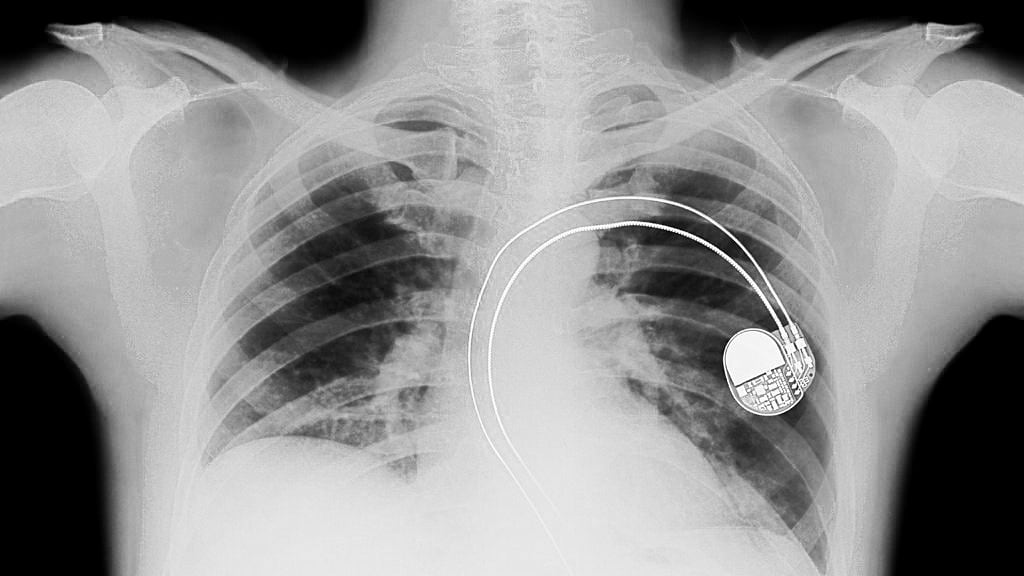Over time, many of us will develop an abnormal heart condition such as an Arrhythmia (irregular heartbeat) or Tachycardia (heat beating too fast) resulting in an irregular heartbeat. Successful treatment of this condition often requires implantation of a pacemaker. Can you weld with a pacemaker? Let’s explore the facts.
Pacemakers are electrical in nature so can you still weld? While it is true that there can be some complications with welding due to the powerful electrical fields generated, you don’t necessarily need to hang up your mig gun. It helps to fully understand how a pacemaker works, how welding equipment works, and what potential interactions can occur.
The most important thing to do if you’re considering using welding equipment is to first talk to your doctor or heart specialist. The information presented here is not medical advice and is general information. Your own specific health conditions may mean you cannot safely weld or additional precautions must be taken. Always consult your doctor before making any decision that could affect your health.
What Is a Pacemaker?
A pacemaker is a small battery operated medical device implanted near the heart to help it keep its proper rhythm. It’s able to detect abnormal rhythms and can automatically send a small electrical pulse to correct them.
New pacemakers are capable of monitoring your breathing, your blood temperature, and other measurements. Doctors can access the pacemaker’s programming wirelessly to download its records or to change how it functions.
Why Would Welding Equipment Affect a Pacemaker?
Welding machines create electromagnetic energy when in use. The electric and electromagnetic fields the welding machine creates are fairly intense, which can sometimes interfere with nearby electrical devices. Radio interference or static is one example of this effect in action.
These fields could in theory cause the pacemaker to possibly malfunction or even temporarily stop working which would lead to an irregular heartbeat. Those who have an implanted defibrillator (with or without a pacemaker) can even be shocked because the device may read the electromagnetic field as an abnormally fast heart rhythm.
Other devices and equipment in daily life can also have potential effects on your pacemaker. Knowing what to steer clear from is the first step to staying safe. See Heart.org for a compiled list of the most common devices that may pose some risk or none at all.
So should I be worried?
In most cases medically implanted devices are not at risk. Studies have shown that a pacemaker will not be damaged or affected by the electromagnetic field generated by a typical home welder. Most doctors still recommend limiting your exposure and if possible limiting the amperage used however. You should also plan on keeping the arc and cables at least 24″ away from your chest.
The effects of the field created by the welder are temporary and will stop once the equipment is not being actively used. There is currently no known method of blocking these EMI fields such clothing, or vests. Just being in the vicinity of an active welding machine may pose a risk.
Gas Welding Is Safe
Gas welding, or oxy-fuel/oxy welding is safe as no electricity is used in this type of welding. It’s not as convenient as a mig welding but at least you can still tackle some projects without worrying about your heart.
Minimizing the Risks
While several studies have been conducted regarding the effects of strong electromagnetic fields on pacemakers, there isn’t definitive medical consensus on whether or not its completely safe to expose a pacemaker to them. There are simply too many variables to take into consideration so exposure risk should be assessed by the individual after consulting with a physician.
Most research does advocate caution at the very least. There’s a number of safety precautions you can take to ensure that your electromagnetic exposure is reduced.
- Don’t use more current than you absolutely need to.
- Place the welder as far away as possible.
- Place the cables together (twist them) and as far away from you as possible. (twisting minimizes EMI)
- Limit your welding current. ( <160 Amps)
- Keep the power source as far from you as possible.
- Maintain a 24″ between the welding arc and your device.
- Connect the ground clamp to the metal as close to the point of welding as possible.
- If you begin to feel like your heart is beating irregularly or otherwise feel ill in any way, stop welding immediately.
- Never weld without someone else present. If you experience a medical event, you need someone there who can help you or call for emergency medical assistance.
Electromagnetic fields are present whenever a welding machine is operating. Entering an area where someone else is welding can also pose risks.
Final Thoughts
Right now, the question of can you weld with a pacemaker cannot be definitively answered. Until more research or dedicated studies are done, potential risks should be considered. If you do decide to continue welding after receiving a pacemaker, do so with caution and with your doctor’s approval.
